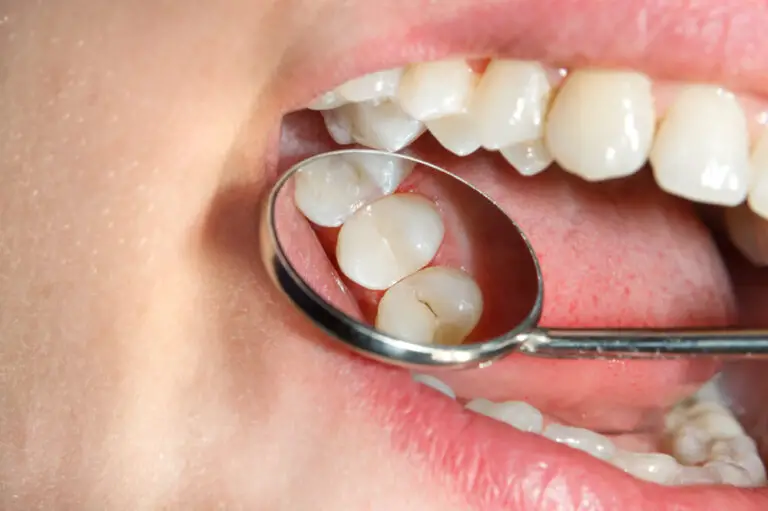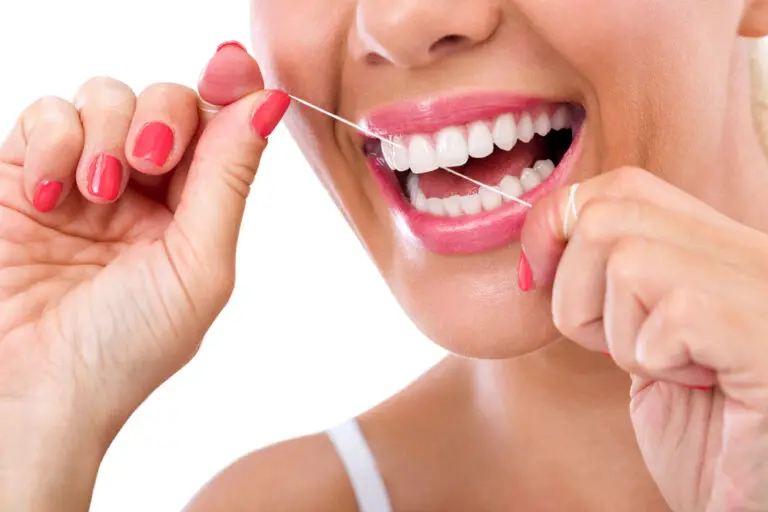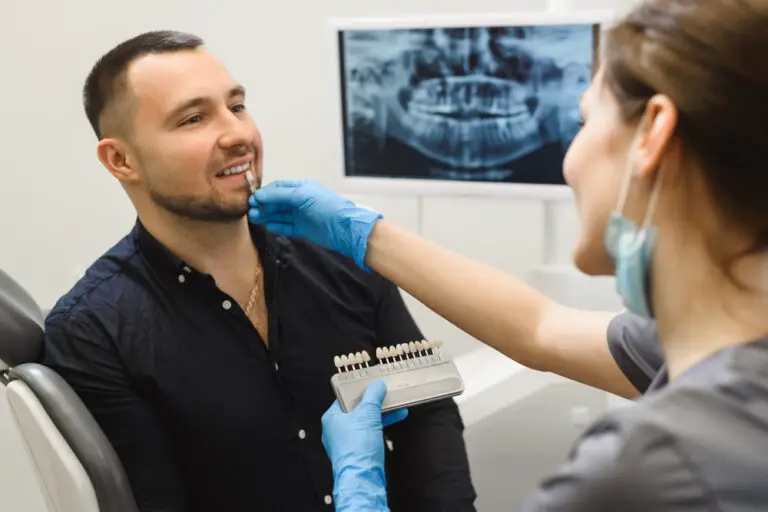Having no natural teeth, also called being edentulous, can be embarrassing and make eating difficult. Fortunately, there are various options to cover up missing teeth so you can smile confidently again. This article will explore the main methods for covering no teeth, including dentures, dental implants, dental bridges, and tooth-supported dentures. We’ll examine the pros and cons of each option in depth to help you decide which solution is best for your situation.
Dentures – A removable tooth replacement
Dentures are removable appliances that replace all your missing teeth and fit snugly over your gums. They are the most common and affordable way to cover no teeth.
There are two main types of dentures:
Full Dentures
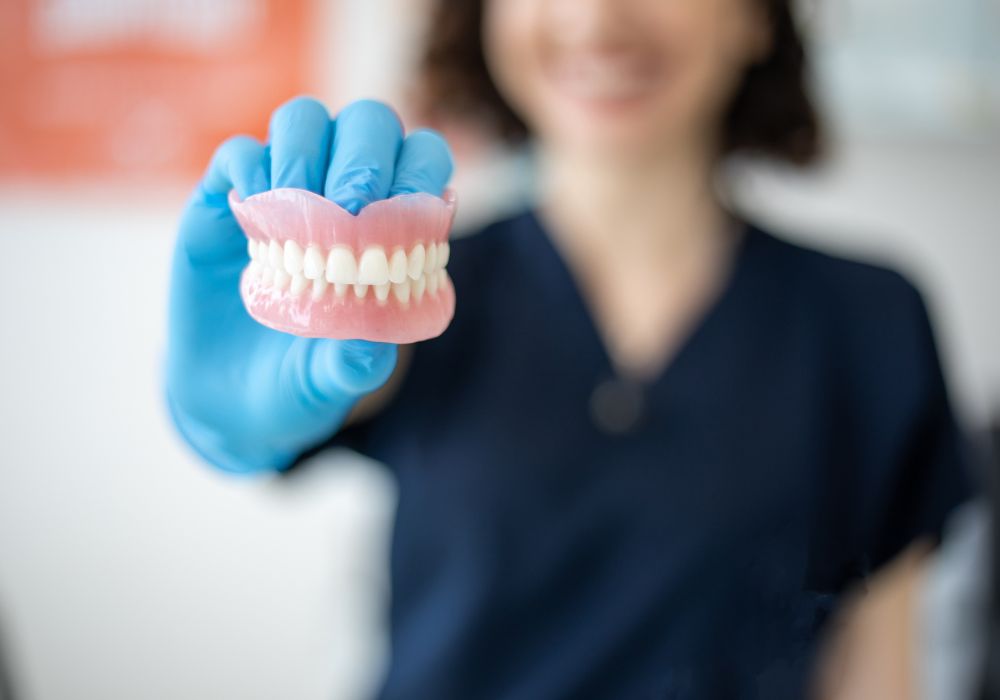
Full dentures rest on your gums and replace all of your natural teeth. They are held in place primarily by suction created as they settle onto your gums. In some cases, denture adhesive can also be used to help keep them stabilized.
Full dentures are made of an acrylic base that supports plastic or porcelain replacement teeth. The base is custom molded to the specific contours of your gums for a secure, snug fit. Your dentist will take detailed impressions of your mouth as a starting point. Try-in appointments are then needed to ensure proper shape, color matching of teeth, and bite alignment before the final dentures are created.
Pros of full dentures:
- More affordable than fixed bridges and implants – cost ranges from $300-$3000 per plate
- Can replace all missing teeth with a single removable appliance
- Allows you to eat foods normally by replacing entire bite surface
- Materials can be molded for optimal fit and comfort
- Easier to clean than fixed options – can be removed and brushed
- Can be easily relined or remade if gums change shape
Cons of full dentures:
- Can feel bulky and require an adjustment period
- More difficult to chew and bite naturally compared to fixed teeth
- Impact sense of taste – less surface area contacting foods
- Can irritate gums if not properly fitted
- Requires meticulous cleaning under plate to avoid infections
- Needs to be removed at night; higher risk of loosening while eating
- May start to sag over time as jawbone resorbs
- Generally need replacing every 5-10 years
Partial Dentures
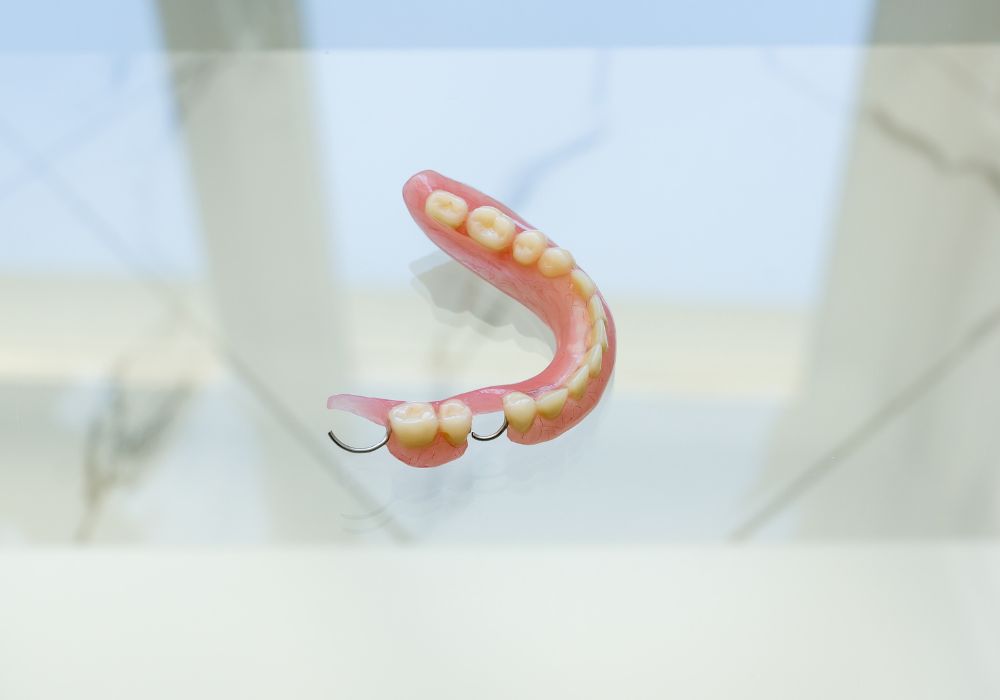
Unlike full dentures, partial dentures only replace certain missing teeth while other natural teeth remain in place. Metal or plastic clasps connect the partial denture to your remaining teeth, providing added support and retention.
Partial dentures have an acrylic base holding the replacement teeth, usually with cobalt-chromium alloy frameworks for support and wire clasps for attachment. As with full dentures, your dentist will take impressions and matching the teeth shape and color.
Pros of partial dentures:
- Only replaces the missing teeth, keeping natural ones
- Uses some of your teeth to aid support and stabilization
- Tends to have better fit than full dentures
- Easier to chew and speak since some natural teeth remain
- Delayed bone loss where natural teeth are present
Cons of partial dentures:
- Visible metal clasps can be unsightly
- Can accelerate decay and gum disease in remaining natural teeth
- Needs frequent professional adjustments as teeth shift
- Not as stable or comfortable as fixed options
- Higher cost than full dentures – ranges from $600-$2500
Caring for Dentures
To keep dentures fitting properly and your gums healthy:
- Remove and thoroughly brush dentures after each meal using a soft brush and liquid soap or denture cleaning paste. This prevents buildup.
- Soak dentures overnight in a sterile denture-soaking solution rather than wearing while sleeping. Keeps them from drying out.
- Brush your gums, tongue and palate every morning before reinserting dentures to remove plaque.
- See your dentist for regular adjustments to ensure proper fit as your mouth tissues change over time. Ill-fitting dentures can damage gums.
- Use a denture adhesive like Fixodent if dentures become loose to improve hold. But be sure to remove and clean the dentures and your gums thoroughly afterward.
Dental Implants – A permanent tooth replacement
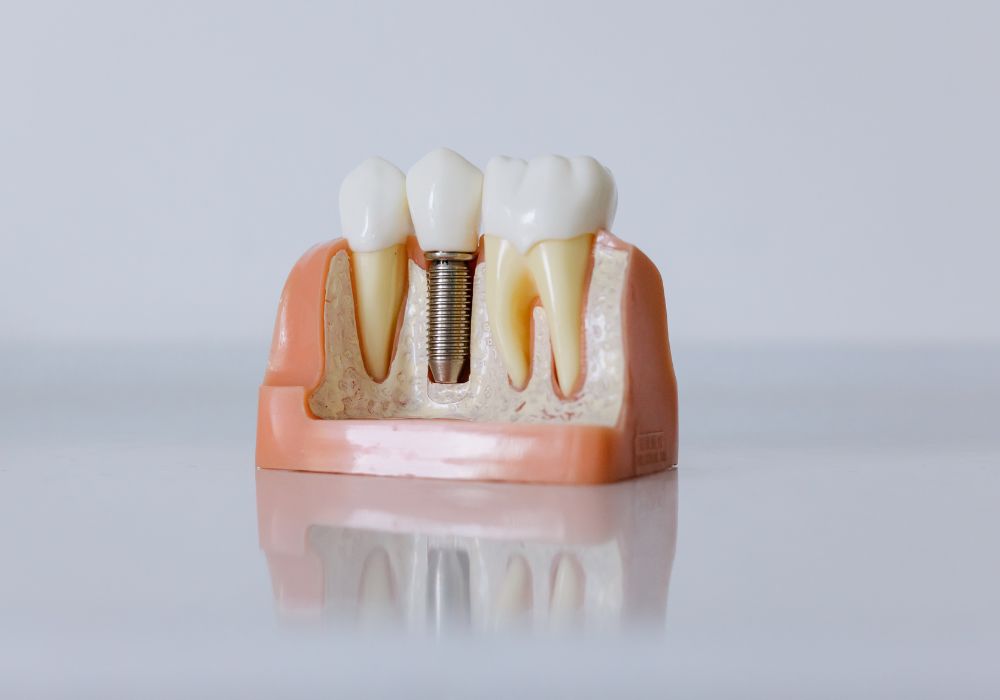
Dental implants involve surgically placing metal titanium posts into your jawbone, which fuse to the bone through a process called osseointegration. After this process, which can take 3-6 months, artificial replacement teeth are attached to the top of the implants. This provides a permanent solution for missing teeth.
The implant procedure involves two phases:
Surgical phase: The implant post is placed into the extracted tooth socket or carefully drilled channel in the jawbone under local anesthesia. The gum tissue is closed over the implant site while integration with the bone occurs over 3-6 months.
Restorative phase: The replacement crown, bridge, or denture is then securely attached to the integrated implant. An abutment acts as the intermediary piece between the implant and prosthetic tooth.
Pros of dental implants:
- Most natural looking, functional and comfortable tooth replacement option
- Permanently fused – provides a stable foundation for artificial teeth
- Prevents bone loss and stimulation of the jawbone
- Neighboring healthy teeth are not compromised for support
- Does not depend on other teeth – each implant is independent
- With care, implants can last several decades – often a lifetime
Cons of dental implants:
- Significantly more expensive than other options – cost ranges from $3000-$4000 per implant
- Requires healthy jawbone of adequate width and density
- Two-step process takes months for full completion
- Higher risk of complications like infections compared to other options
- Not recommended for people with certain health conditions
- Need for occasional replacement of the crown attached to the implant
Since the implants integrate with the bone like natural tooth roots, they provide a strong, permanent foundation for replacement teeth that feel and function like the real thing. But the process requires adequate bone mass and multiple invasive procedures.
Dental Bridges – A fixed option using neighboring teeth
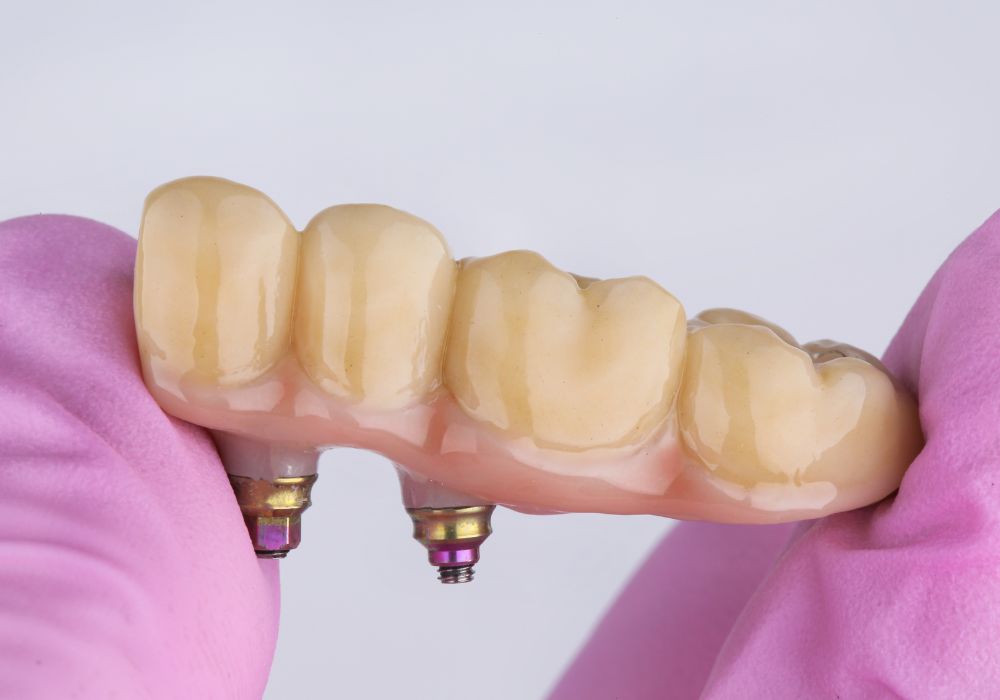
Dental bridges literally bridge the gap where one or more teeth are missing. Traditional bridges involve crowns placed on the teeth flanking the missing one(s) for support. False teeth attached to these crowns then fill in the space.
The process involves:
- Reducing the size of the supporting natural teeth with crowns
- Taking impressions of the teeth on either side
- Creating a fixed bridge with crowns cemented to the anchoring teeth and false teeth fused between
There are also newer Maryland bonded bridges that bond a false tooth to the backs of adjacent teeth without crowns.
Pros of dental bridges:
- Provides a fixed replacement for missing teeth
- Stays firmly in place like natural teeth
- Can replace multiple adjacent missing teeth
- Restores your smile and ability to properly chew
- Minimal adjustment period since they are permanently fixed
- Can last 10-15 years with proper care
Cons of dental bridges:
- Requires drilling down healthy anchoring teeth for crowns
- Higher risk of tooth decay or fractures in those anchor teeth
- Not recommended if you grind your teeth
- More expensive than removable options – ranges from $500-$1500 per pontic/false tooth
- Need for occasional replacement if the bridge becomes damaged
While dental bridges can provide a seamless solution for gaps from missing teeth, they do rely heavily on the neighboring natural teeth for support. These anchor teeth are at greater risk of problems.
Tooth-supported Dentures – A removable option using natural teeth
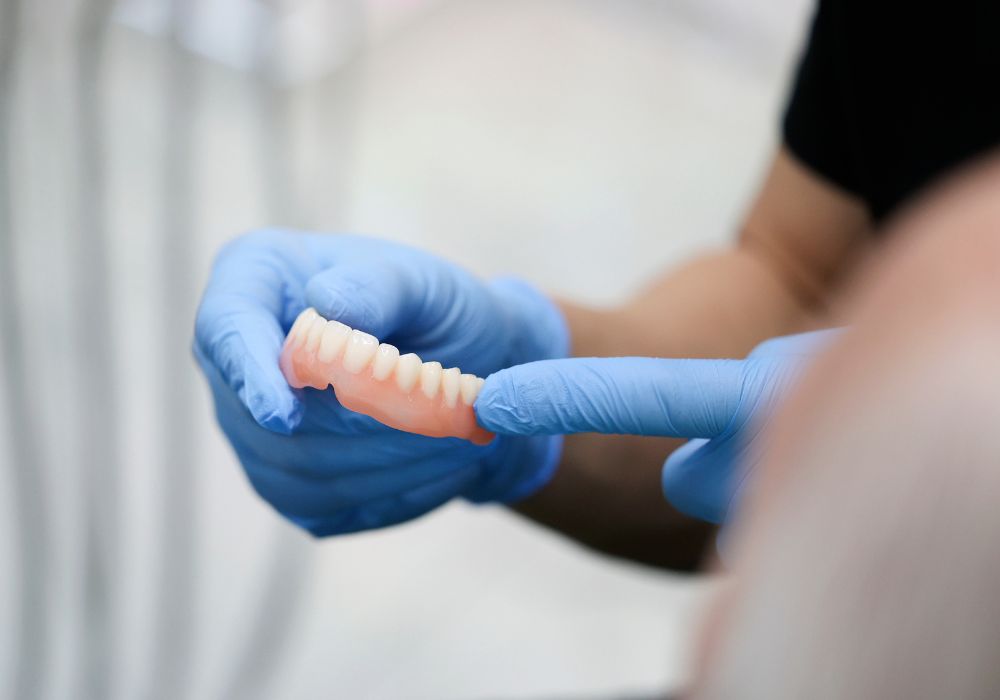
Tooth-supported dentures are removable full or partial dentures that clasp onto some of your remaining natural teeth for added stability and retention. This helps prevent slipping while eating.
They involve:
- Clasps that wrap around existing teeth anchoring the denture
- Pink acrylic base holding artificial teeth that replaces missing ones
- Metal framework along the gumline for structural support
Pros of tooth-supported dentures:
- Much more stable than conventional dentures
- Allows you to keep and utilize some natural teeth
- Clasps prevent dentures from dislodging while eating
- Provides stimulation that delays bone loss
- More comfortable for chewing and speaking
Cons of tooth-supported dentures:
- Can accelerate decay and gum disease in the supporting natural teeth
- Needs frequent professional adjustments to keep proper fit
- More expensive than traditional removable dentures
- Can damage anchoring teeth if not fitted correctly
- Gums must still be cleaned thoroughly each day
Tooth-supported dentures provide the stability benefits of using your natural teeth for clasps while replacing other missing teeth. But oral hygiene is critical to avoid problems with the anchoring teeth.
Which option is best for your situation?
Choosing how to replace lost teeth depends on several factors specific to your needs:
- Budget – Dentures tend to be cheaper than fixed bridges and implants. Dental insurance may cover a portion of the cost.
- Existing Teeth – If you still have some healthy teeth remaining, a tooth-supported denture may be an option.
- Lifestyle – Those with active lifestyles may benefit more from the permanence of bridges or implants over removable dentures.
- Jawbone Condition – Thin or brittle jawbones may not support bridges or implants well. Dentures may be better.
- Appearance – If aesthetics are important, dental implants provide the most natural looking and functional replacement.
- Timeframe – Implants require surgeries and months for the process. Dentures may be faster.
Discuss all the options thoroughly with your dentist. Together you can determine the best tooth replacement solution for your particular needs and budget. Proper oral hygiene and care will help prolong the results.
Frequently Asked Questions
Here are answers to some common questions about tooth replacement options:
Q: What are my options to replace just a couple of missing teeth?
A: For just one or two missing teeth, dental implants, bridges, or partial dentures are good options. An implant for each lost tooth provides the most permanent solution.
Q: Is it possible to get replacement teeth the same day my teeth are extracted?
A: Some dentists offer immediate dentures placed the same day teeth are removed. But most recommend waiting 4-12 weeks until initial gum healing has occurred for the best fit.
Q: How long do bridges and implants last with good care?
A: With proper maintenance, implants can last several decades, often a lifetime. Dental bridges generally last 10-15 years before needing replacement. The crowns on implants may need replacement after 10-15 years.
Q: How often do dentures need to be replaced?
A: As your mouth naturally changes shape over time, dentures typically need replacing every 5-10 years. Relining dentures can help prolong their fit. Annual adjustments from your dentist are recommended.
Q: Any tips for getting used to wearing dentures?
A: Adjusting to dentures takes practice. Wear them first for a few hours at a time and slowly increase wear time. Use adhesive if they become loose. Your dentist can adjust them for a more comfortable, secure fit. Practice speaking, reading out loud, and smiling. Be patient with yourself.


